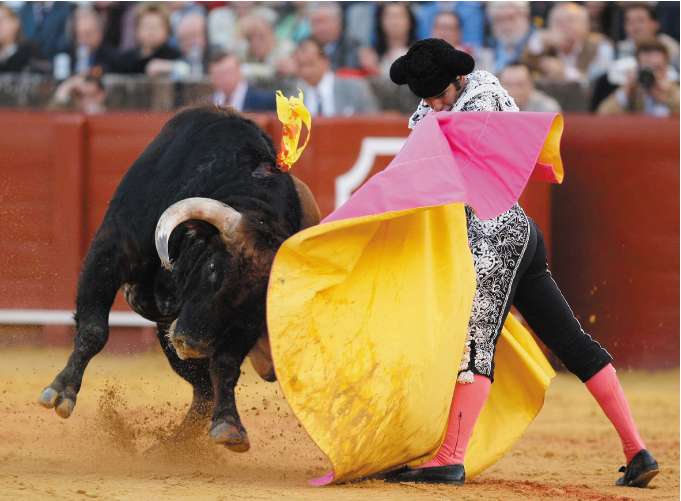Bullfight fans lament the 'kittens' in the corrida

Seville's week-long spring fair, the Feria de Abril, has opened with the usual flounces, fancy carriages and 24-hour sherry and shellfish parties, but the bullfights – the heart of what originated as a horse and cattle market – have so far been a disaster.
"They are not bulls but kittens," lamented El Pais's bullfight correspondent Antonio Lorca in the culture section of yesterday's newspaper about Sunday's corrida. Even the staunchly taurine ABC newspaper described bulls as "absolutely leaden." One bullfight was, Lorca reckoned, "an afternoon best forgotten".
Bullfights in Seville's spring fair are supposed to be a highlight of the taurine calendar. The city's 18th century La Maestranza bullring is arguably Spain's most splendid venue for this national fiesta (just don't call it a sport). But in the corridas yesterday, the bulls waddled about, keeled over and all but fell asleep on the job.
"At first sight they looked like bulls, with long hoofs, and horns looking suspiciously doctored, but in reality they were kittens. Instead of bellowing they mewed. 'Meow, meow,' they cried, and the public melted at such a sweet spectacle. Instead of respect, they aroused pity," wrote Lorca.
Dismal displays happen annually, to groans of despair from aficionados. But this year's fiasco in Seville coincides with a crescendo of voices calling for the spectacle to be scrapped as cruel and a waste of money.
Hundreds of people protested outside La Maestranza on Sunday chanting "Torture is not culture" and "Not with my taxes". Andalusia's regional government gave €2.5m in subsidies to bullfighting last year.
"We don't all support the humiliation, torture and death of animals," said Antonio Moreno, chairman of the Andalusian Collective against Animal Cruelty.
The Barcelona daily newspaper La Vanguardia wrote: "Obviously, protesters against bullfights are in a minority, but that doesn't mean they should be disdained by those who support them." Such protests are "a sign of democratic health and civic vitality."
Opposition to bullfighting is growing in Catalonia and nationwide: the televised death in the afternoon is now confined to pay channels.
Fernando Alvarez, a biology professor, has challenged the myths that glorify bullfighting. "Bulls suffer and die during the bullfight, but have no way of escape; the bull doesn't enjoy a happy life or a dignified death. If we stopped breeding bulls to kill, there's no evidence that wild bulls or their habitat would become extinct. The artistic and traditional aspects of the bullfight cannot justify its sadistic component," he wrote in Friday's Publico newspaper.
Join our commenting forum
Join thought-provoking conversations, follow other Independent readers and see their replies
Comments
Bookmark popover
Removed from bookmarks